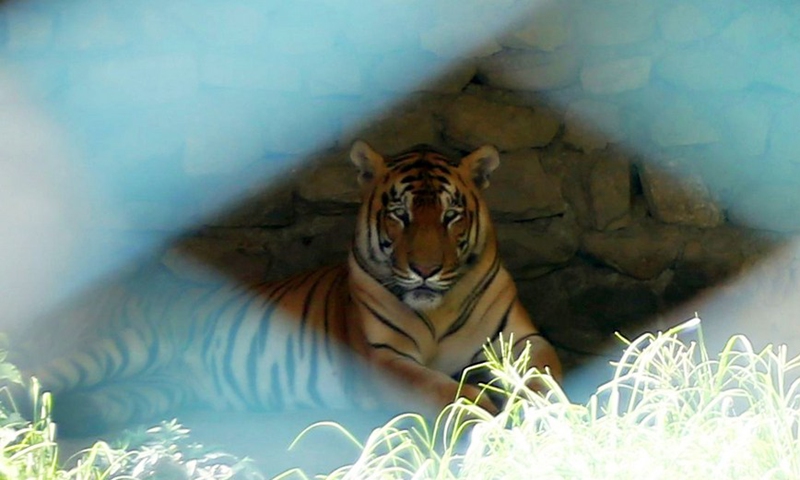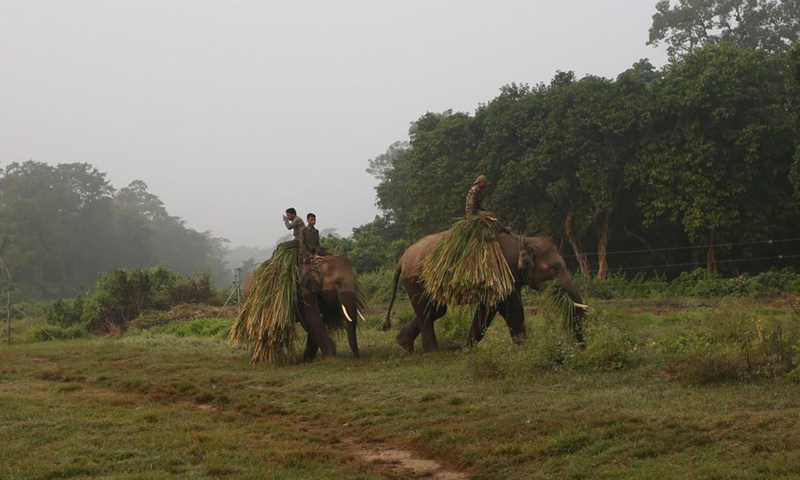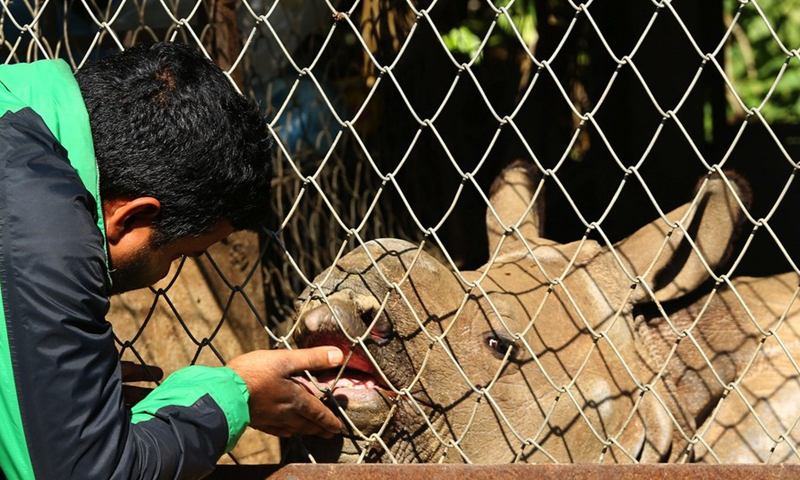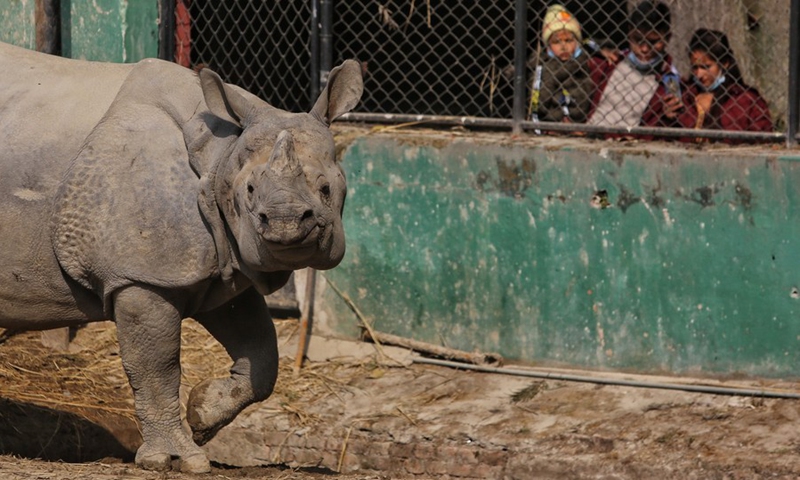
A Royal Bengal Tiger rests at the Central Zoo of Jawalakhel in Kathmandu, Nepal, July 29, 2018, the International Tiger Day. (Photo: Xinhua)

Elephants walk with grass taken from forest in Sauraha, a tourism hub in southwest Nepal's Chitwan district, Nov. 3, 2019. (Photo: Xinhua)

A baby rhino is examined by a doctor at the premises of National Trust for Nature Conservation at Chitwan National Park, Nepal, Jan. 7, 2018.(Photo: Xinhua)

Visitors watch a rhino at the Central Zoo in Lalitpur, Nepal, Dec. 10, 2020.(Photo: Xinhua)
Nepal has managed to increase forested areas and the population of endangered animals, tigers and one-horned rhinos in particular, in its efforts to preserve biodiversity over the years.
The forested areas in the country have reached 45 percent of the total land area. "This is a significant jump from less than 30 percent in the early 1990s," Megh Nath Kafle, spokesperson for the Ministry of Forests and Environment, told Xinhua.
A network of 20 protected areas covers nearly 24 percent of the total forest areas and manages over 243 watersheds, according to the ministry.
Nepali officials and experts attribute the success mainly to the community-based forest management system.
In 1957, the Nepali government nationalized the privately-owned forest resources and continued to expand governments' role in forest protection and management till early 1970s. In late 1970s, a community-based forest management system was introduced, and there are over 22,000 forest user groups now across the country which have been proved to be vital in preserving forest resources.
"The preservation of forest resources under the community-based forest management system, the migration of people from hilly areas to plain areas leaving forests to grow, and the increasing use of cooking gas instead of fire woods have all contributed to the growth of the areas covered by forest," said Prabhu Budhathoki, an expert on biodiversity conservation.
According to the Forests Ministry, Nepal boasts an ecologically diverse landscape which is home to many different species of flora and fauna. The South Asian country has as many as 35 different vegetation types and 118 ecosystems.
"The community-based forest management system has played an important role not only in expanding the forested areas, but also in preserving biodiversity and wildlife in forests managed by community forestry user groups," said Bharati Kumari Pathak, chairperson of the Federation of Community Forestry Users in Nepal.
She highlighted the preservation of certain species of trees, including Shorea robusta, locally known as Sal, Acacia catechu, locally known as Khair, and Dalbergia, locally known as Sissoo.
For the protection of vulnerable wildlife species, small zoos have been developed inside community forests, she said.
Besides notable progress in forest protection, Nepal has also made efforts in preserving tigers and one-horned rhinos, both endangered species.
When the Nepali government declared in 2018 that the tiger population in the country had reached 235 from 121 in 2009, it put Nepal ahead of other countries on track to meet the international goal of doubling the tiger population by 2022.
In 2010, Nepal, along with other range countries, endorsed the St. Petersburg Declaration on Tiger Conservation. Since then, the country has been conducting a four-year periodic assessment to track the progress toward reaching the national target of 250 tigers.
In April this year, Nepal declared that the number of one-horned rhinos had increased to 752 from 645 in 2015. The Himalayan country is among a few countries where the greater one-horned rhinos occur.
The conservation efforts in both Nepal and India are lauded, as one-horned rhinos were once on the verge of extinction with just 200 living by the 1900s, according to the World Wildlife Fund.
"Nepal has set an example in the conservation of tigers and one-horned rhinos, and is ahead of any other country in increasing the tiger population," said Budhathoki, a former member of the National Planning Commission. "The international community should help Nepal continue the preservation efforts as the county, despite being one of the poorest in the world, has invested heavily on the preservation of important species."
Poaching for illegal trade in rhino horns has remained the biggest threat, and Nepal has mobilized its army to fight the poaching, noted Budhathoki.
